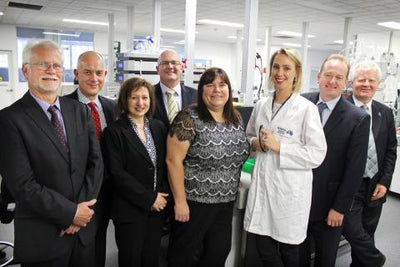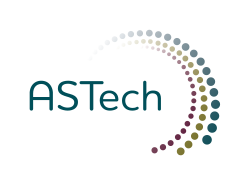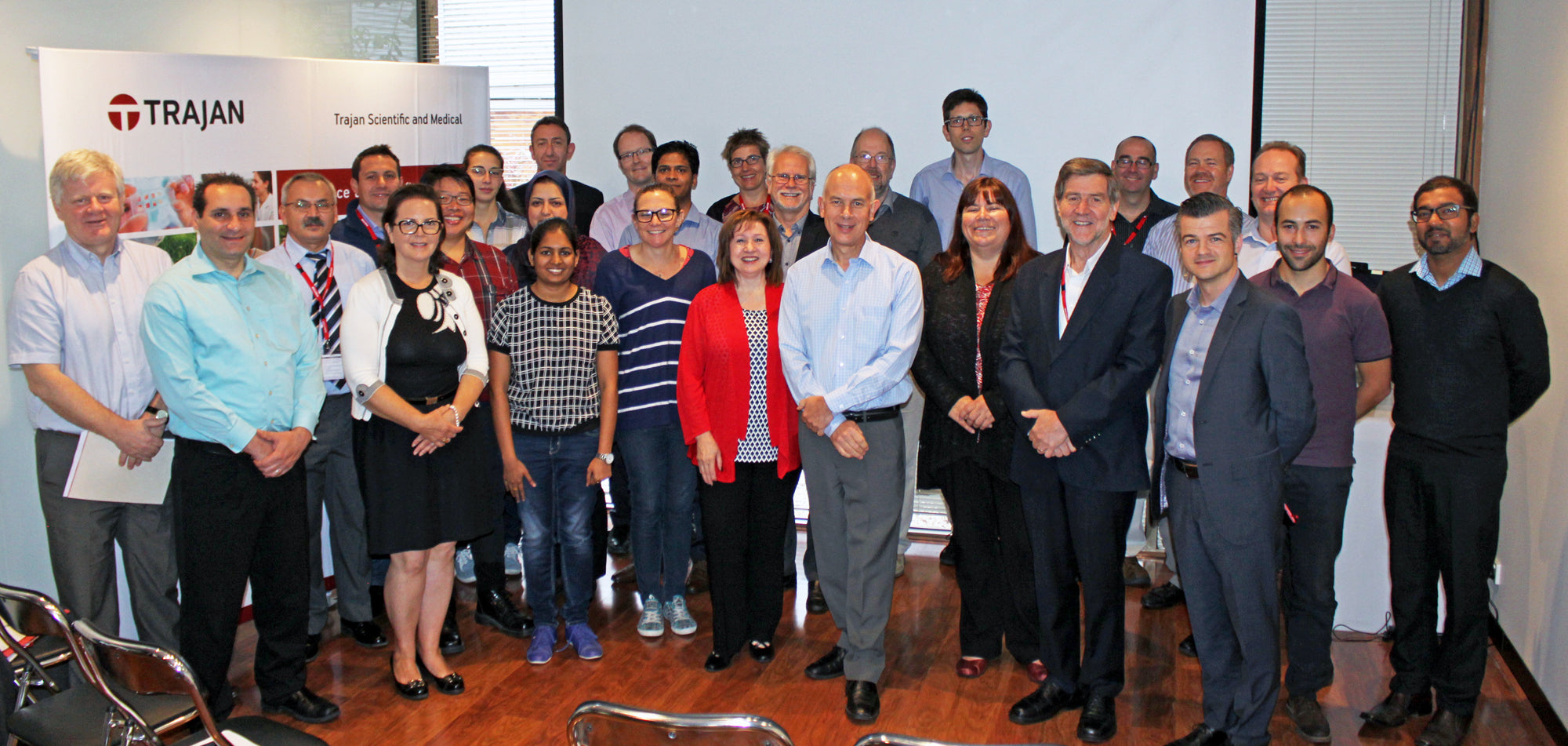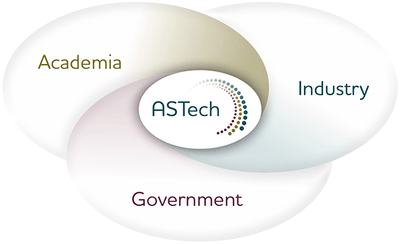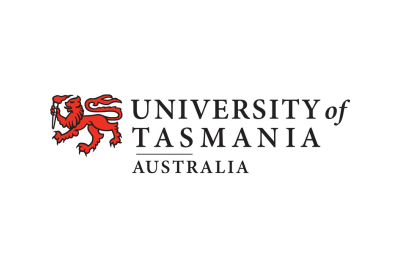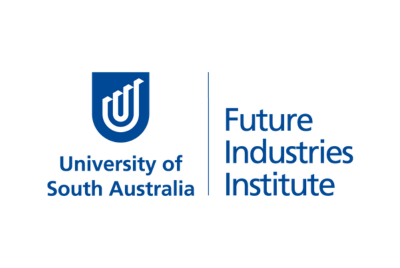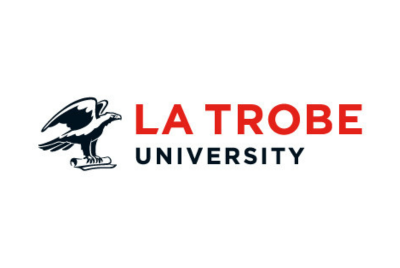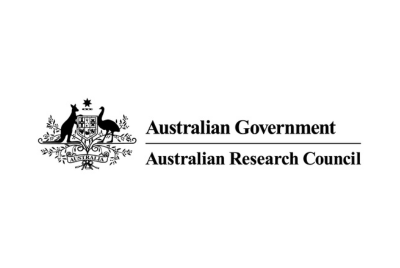| Compact capillary high performance liquid chromatography system for pharmaceutical on-line reaction monitoring |
Coates, L.J., Gooley, A., Lam, S.C., Riley, F., Paull, B. |
Analytica Chimica Acta, 2023, 1247, 340903 |
2023 |
| Small footprint liquid chromatography-mass spectrometry for pharmaceutical reaction monitoring and automated process analysis |
Hemida, M., Haddad, P.R., Lam, S.C., Sekulic, S., Paull, B. |
Journal of Chromatography A, 2021, 1656, 462545 |
2021 |
| Small-Footprint, Field-Deployable LC/MS System for On-Site Analysis of Per- And Polyfluoroalkyl Substances in Soil |
Hemida, M., Ghiasvand, A., Gupta, V., Haddad, P.R., Paull, B. |
Analytical Chemistry, 2021, 93(35), pp. 12032–12040 |
2021 |
| Hyphenated sample preparation-electrospray and nano-electrospray ionization mass spectrometry for biofluid analysis |
Mikhail, I.E., Tehranirokh, M., Gooley, A.A., Guijt, R.M., Breadmore, M.C. |
Journal of Chromatography A, 2021, 1646, 462086 |
2021 |
| In-Syringe Electrokinetic Protein Removal from Biological Samples prior to Electrospray Ionization Mass Spectrometry |
Mikhail, I.E., Tehranirokh, M., Gooley, A.A., Guijt, R.M., Breadmore, M.C. |
Angewandte Chemie - International Edition, 2020, 59(51), pp. 23162–23168 |
2020 |
| Ultraviolet absorbance detector based on a high output power 235 nm surface mounted device-type light-emitting diode |
Lam, S.C., Coates, L.J., Gupta, V., Haddad, P.R., Paull, B. |
Journal of Chromatography A, 2020, 1631, 461540 |
2020 |
| Miniature Multiwavelength Deep UV-LED-Based Absorption Detection System for Capillary LC |
Hemida, M., Coates, L.J., Lam, S., Haddad, P.R., Paull, B. |
Analytical Chemistry, 2020, 92(20), pp. 13688–13693 |
2020 |
| Modular, cost-effective, and portable capillary gradient liquid chromatography system for on-site analysis |
Coates, L.J., Lam, S.C., Gooley, A.A., Paull, B., Wirth, H.-J. |
Journal of Chromatography A, 2020, 1626, 461374 |
2020 |
| Development of polydimethylsiloxane-microdiamond composite materials for application as sorptive devices |
Hasan, C.K., Wirth, H.-J., Gooley, A., Nesterenko, P.N., Paull, B. |
Journal of Chromatography A, 2020, 1613, 460669 |
2020 |
| In-Syringe Electrokinetic Protein Removal from Biological Samples prior to Electrospray Ionization Mass Spectrometry |
Mikhail, I.E., Tehranirokh, M., Gooley, A.A., Guijt, R.M., Breadmore, M.C. |
Advanced Materials, 2020, 132(51), pp. 23362–23368 |
2020 |
| Capillary gap flow cell as capillary-end electrochemical detector in flow-based analysis |
Islam, M.A., Lam, S.C., Li, Y., Atia, M.A., Mahbub, P., Nesterenko, P.N., Paull, B., Macka, M. |
Electrochimica Acta, 303, pp. 85-93 |
2019 |
| Selective capillary electrophoresis separation of mono and divalent cations within a high-surface area-to-volume ratio multi-lumen capillary |
Nakatani, N., Cabot, J.M., Lam, S.C., Rodriguez, E.S., Paull, B. |
Analytica Chimica Acta, 1051, pp. 41-4 |
2019 |
| On-line solvent exchange system: Automation from extraction to analysis |
Fornells, E., Hilder, E.F., Shellie, R.A., Breadmore, M.C. |
Analytica Chimica Acta, 1047, pp. 231-237 |
2019 |
| Reversed-Phase Functionalised Multi-lumen Capillary as Combined Concentrator, Separation Column, and ESI Emitter in Capillary-LC–MS |
Rodriguez, E.S., Lam, S.C., Haddad, P.R., Paull, B. |
Chromatographia, 82(1), pp. 197-209 |
2019 |
| Miniaturized micromachined gas chromatography with universal and selective detectors for targeted volatile compounds analysis |
Gras, R., Luong, J., Shellie, R.A. |
Journal of Chromatography A, 1573, pp. 151-155 |
2018 |
| Low-Cost Passive Sampling Device with Integrated Porous Membrane Produced Using Multimaterial 3D Printing |
Kalsoom, U., Hasan, C.K., Tedone, L., Desire, C., Li, F., Breadmore, M.C., Nesterenko, P.N., Paull, B. |
Analytical Chemistry Volume 90(20), pp. 12081-12089 |
2018 |
| Comparison of cation-exchange capillary columns used for ion chromatographic separation of biogenic amines |
Li, Y., Nesterenko, P.N., Stanley, R., Paull, B., Macka, M. |
Journal of Chromatography A, 2018, 1571, pp. 193-200 |
2018 |
| Miniaturized capillary ion chromatograph with UV light-emitting diode based indirect absorbance detection for anion analysis in potable and environmental waters |
Murray, E., Li, Y., Currivan, S.A., Moore, B., Morrin, A., Diamond, D., Macka, M., Paull, B. |
Journal of Separation Science, 2018, 41(16), pp 3224-3231 |
2018 |
| Flow injection gas chromatography with sulfur chemiluminescence detection for the analysis of total sulfur in complex hydrocarbon matrixes |
Hua, Y., Hawryluk, M., Gras, R., Shearer, R., Luong, J. |
Journal of Separation Science, 2018, 41(2), pp. 469-474 |
2018 |
| Evaporative membrane modulation for comprehensive two-dimensional liquid chromatography |
Fornells, E, Barnett, B., Bailey, M., Hilder, E.F, Shellie, R.A., Breadmore, M.C. |
Analytica Chimica Acta, 2018, 1000, pp. 303-309 |
2018 |
| In situ methanation with flame ionization detection for the determination of carbon dioxide in various matrices |
Luong, J., Hua, Y., Gras, R., Hawryluk, M. |
Analytical Methods, 2018, 10(10), pp. 1275-1279 |
2018 |
| Precise, accurate and user-independent blood collection system for dried blood spot sample preparation |
Neto, R., Gooley, A., Breadmore, M.C., Hilder, E.F., Lapierre, F., |
Analytical and Bioanalytical Chemistry, 2018, 410(14), pp. 3315-3323 |
2018 |
| Multi-channel capillaries and photonic crystal fibres for separation sciences |
Currivan, S., Upadhyay, N., Paull, B. |
TrAC – Trends in Analytical Chemistry, 2018, 102, pp. 322-331 |
2018 |
| Direct Measurement of Elemental Mercury Using Multidimensional Gas Chromatography with Microwave-Induced Helium Plasma Atomic Emission Spectroscopy |
Gras, R., Luong, J., Shellie, R.A. |
ACS Earth and Space Chemistry, 2018, 2(5), pp. 471-478 |
2018 |
| Positive Temperature Coefficient Compensating Heating for Analytical Devices |
Gras, R, Luong, J., Pursch, M., Shellie, R.A. |
Analytical Chemistry, 2018, 90(11), pp. 6426-6430 |
2018 |
| Gas chromatography with simultaneous detection: Ultraviolet spectroscopy, flame ionization, and mass spectrometry |
Gras, R., Luong, J., Haddad, P.R., Shellie, R.A. |
Journal of Chromatography A, 2018, 1563, pp. 171-179 |
2018 |
| Review of the structural characterization, quality evaluation, and industrial application of Lycium barbarum polysaccharides |
Wu, D.-T., Guo, H., Lin, S., Lam, S.-C, Zhao, L, Lin, D.-R., Qin, W. |
Trends in Food Science and Technology, 2018, 79, pp. 171-183 |
2018 |
| High sensitivity deep-UV LED-based z-cell photometric detector for capillary liquid chromatography |
Li, Y., Nesterenko, P.N., Stanley, R., Paull, B., Macka, M. |
Analytica Chimica Acta, 2018, 1032, pp. 197-202 |
2018 |
| Evaporative membrane modulation for comprehensive two-dimensional liquid chromatography |
Fornells, E., Barnett, B., Bailey, M., (…), Shellie, R.A., Breadmore, M.C. |
Analytica Chimica Acta, 2018, 1000, pp. 303-309 |
2018 |
| Recent advances in enhancing the sensitivity of electrophoresis and electrochromatography in capillaries and microchips (2014–2016) |
Breadmore, M.C., Wuethrich, A., Li, F., Phung, S.C., Kalsoom, U., Cabot, J.M., Tehranirokh, M., Shallan, A.I., Abdul Keyon, A.S., See, H.H., Dawod, M., Quirino, J.P. |
Electrophoresis, 2017, 38, 33-59 |
2017 |
| Principles around Accurate Blood Volume Collection Using Capillary Action |
Lapierre, F., Gooley, A., Breadmore, M. |
Langmuir, 2017, 33(50), pp. 14220-14225 |
2017 |
| The evolution of 3D printing |
Paull, B. |
LC-GC Europe, 2017, 30(11), pp. 611-612 |
2017 |
| Membrane assisted and temperature controlled on-line evaporative concentration for microfluidics |
Fornells, E., Barnett, B., Bailey, M., Hilder, E.F., Shellie, R.A., Breadmore, M.C. |
Journal of Chromatography A, 2017, 1486, pp. 110-116 |
2017 |
| High-throughput gas chromatography for volatile compounds analysis by fast temperature programming and adsorption chromatography |
Gras, R., Hua, Y., Luong, J. |
Journal of Separation Science, 2017, 40(9), pp. 1979-1984 |
2017 |
| A simplified approach in flow controlled multi-dimensional gas chromatography |
Luong, J., Gras, R., Shellie, R.A. |
Analytical Methods, 2017, 9(19), pp. 2835-2839 |
2017 |
| Gas chromatography with diode array detection in series with flame ionisation detection |
Gras, R., Luong, J., Shellie, R.A. |
Journal of Chromatography A, 2017, 1500, pp. 153-159 |
2017 |
| Gas chromatography and diode array detection for the direct measurement of carbon disulfide in challenging matrices |
Gras, R., Luong, J., Shellie, R.A. |
Analytical Methods, 2017, 9(26), pp. 3908-3913 |
2017 |
| Differential ion mobility spectrometry with temperature programmable micromachined gas chromatography for the determination of bis(chloromethyl)ether |
Luong, J., Gras, R., Shellie, R.A. |
Analytical Methods, 2017, 9(34), pp. 5003-5008 |
2017 |
| A brief history and recent advances in ozone induced chemiluminescence detection for the determination of sulfur compounds by gas chromatography |
Luong, J., Gras, R., Hawryluk, M., Shearer, R. |
Analytical Methods, 2016, 8, 7014-7024 |
2016 |
| Trace-level screening of dichlorophenols in processed dairy milk by headspace gas chromatography |
Gras, K., Luong, J., Gras, R., Shellie, R.A. |
Journal of Separation Science, 2016, 39, 3957-3963 |
2016 |
| Thermal Independent Modulator for Comprehensive Two-Dimensional Gas Chromatography |
Luong, J., Guan, X., Xu, S., Gras, R., Shellie, R.A. |
Analytical Chemistry, 2016, 88, 8428-8432 |
2016 |
| Membrane assisted and temperature controlled on-line evaporative concentration for microfluidics |
Fornells, E., Barnett, B., Bailey, M., Shellie, R.A., Hilder, E.F., Breadmore, M.C. |
Journal of Chromatography A, 2016, 1486, 110-116 |
2016 |
| New perspectives on the annihilation electrogenerated chemiluminescence of mixed metal complexes in solution |
Kerr, E., Doeven, E.H., Barbante, G.J., Hogan, C.F., Hayne, D.J., Donnelly, P.S., Francis, P.S. |
Chemical Science, 2016, 7, 5271-5279 |
2016 |
| Cheers: Cracking open the bottleneck of extraction in bioanalysis |
Breadmore, M.C. |
Bioanalysis, 2015, 7, 3053-3055 |
2015 |
| Direct Measurement of Trace Elemental Mercury in Hydrocarbon Matrices by Gas Chromatography with Ultraviolet Photometric Detection |
Gras, R., Luong, J., Shellie, R.A. |
Analytical Chemistry, 2015, 87, 11429-11432 |
2015 |

